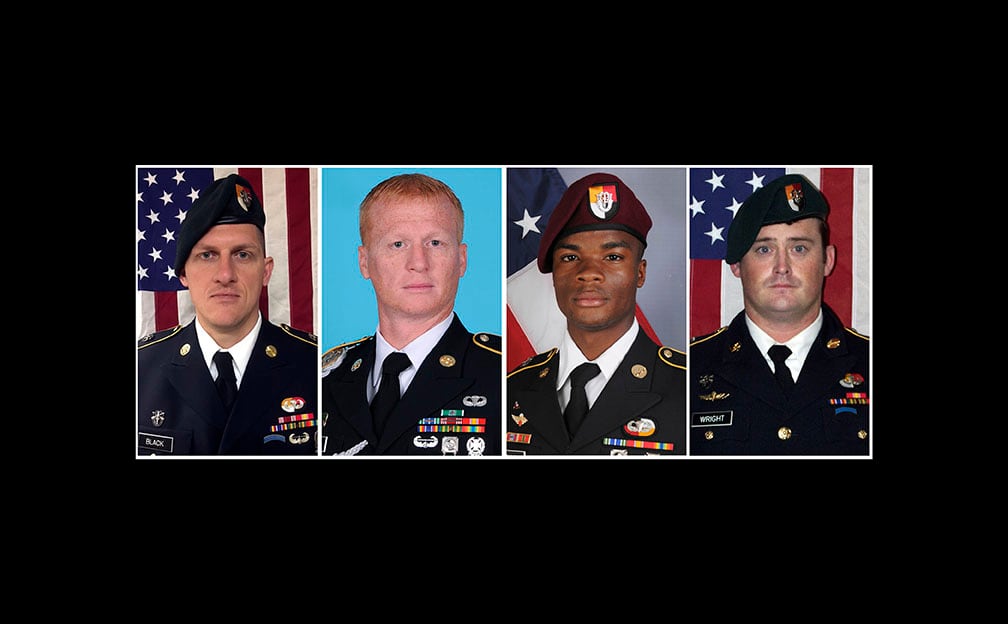U.S. forces carried out nearly 26 missions over the last six months in the region of Niger where an Oct. 4 ambush killed four American soldiers, Pentagon officials said Thursday.
The 26 missions were conducted in the general location where the ambush took place but not the exact region, said Marine Lt. Gen. Kenneth McKenzie Jr., director of the Joint Staff, during a televised press briefing at the Pentagon.
The information from McKenzie comes as U.S. officials continue to investigate the incident that left four U.S. soldiers dead. The soldiers were on a joint patrol with Nigerien forces when they were ambushed near the Mali-Niger border.
Staff Sgt. Bryan Black, Staff Sgt. Dustin Wright, Staff Sgt. Jeremiah Johnson and Sgt. La David Johnson died in the attack. They were assigned to the 3rd Special Forces Group.
U.S. officials continue to maintain that the ambushed patrol had a low probability of enemy contact when it stepped out on its mission.
“I don’t want to paint it as friendly. We knew there might be problems,” which is why the patrol was armed, McKenzie said.
The ambush on Oct. 4 has sparked many questions on a once little-known operation, including whether U.S. forces are properly equipped or have the necessary support in the region. It has also called into question the full scope of the U.S. mission in Niger, which U.S. officials maintain is non-combat train, advise and assist mission.
On Monday, Chairman of the Joint Chiefs of Staff Gen. Joseph Dunford told reporters at a Pentagon press briefing that U.S. soldiers on the ground didn’t call for air support for at least an hour into the firefight.
It took French Mirage jets 30 minutes to scramble and another 30 minutes before they were on station, Dunford told reporters.
News that U.S. troops engaged in combat went nearly two hours without air support has renewed criticisms of the U.S. operation in Niger.
RELATED

On Thursday, McKenzie was pressed by reporters about the air support timeline and whether it was strange that the troops on the ground didn’t request air support for an hour.
“It may have been they were under fire so intense they were unable to get to their communications equipment,” McKenzie answered, or U.S. soldiers simply thought they had the issue under control.
The investigation will determine those facts, he said to reporters.
RELATED

Officials also continued to push back on claims that a U.S. soldier was abandoned on the battlefield. Sgt La David Johnson’s body was found nearly 48 hours after the ambush by Nigerien forces roughly a mile from the incident.
“The thing they got wrong was that we abandoned one of our soldiers,” said Pentagon spokeswoman Dana White on Thursday, when asked what the media has gotten wrong about the incident in Niger.
Shawn Snow is the senior reporter for Marine Corps Times and a Marine Corps veteran.



